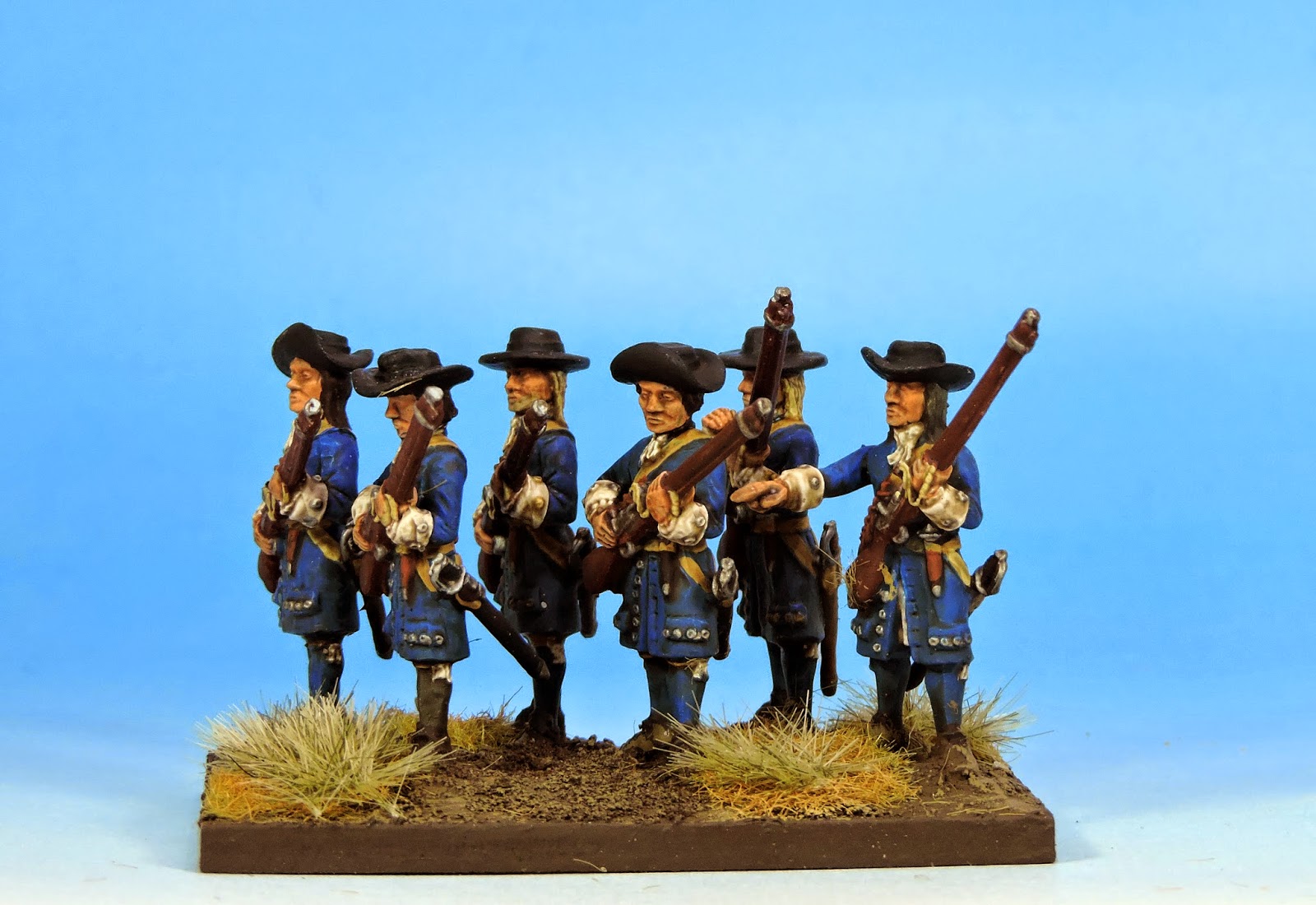 |
| The benchmark - flat painted - gunked - varnished |
As mentioned previously I had decided on a very pragmatic approach to creating the forces for both sides in the Scanian War project.
 |
| hand painted undercoat using Vallejo Model Colour White |
My plan was to use a standard painting method consisting of a white undercoat, flat painting of well chosen bold and contrasting uniform colours followed by brushed on Army Painter gunk. The final step was to be matt varnishing to tone down the shiny toy look which I dislike so much.
 |
| Mountains of these to get through in batches of 10 |
My one concession which I introduced after painting about 20 cavalry was to run a flesh wash over the flat Dwarf Skintone I used for faces and hands. It adds a little depth and lifts the figures up a notch.
This kind of painting is not enjoyable for me as I like to think of myself as reasonable with the brush and capable of achieving interesting and competent levels of technique. On the credit side of the ledger industrial scale painting offers its own rewards the chief of those being - large numbers of consistent looking miniatures finished in very short periods of time.
 |
| Providing the contrast to flat painted bold colours |
By basing the models with as much care as you would take over a figure which took 2.5 hours to paint, a 25 minute paint job closes the gap very significantly on those miniature works of art. Bearing in mind that the sole purpose of adopting this method was to game with the output and that the models always look best at distances of between 18 and 24 inches, I confess to having no sinking feeling whatsoever as I watch the lead mountain reduce and the serried ranks swell before my eyes.
 |
| One of the finest tools in my armoury |
I was pleased enough with the results to extend the scope into speed painting GNW cavalry for an imminent LoA weekend event requiring copious numbers of Swedish Rytter. As can be seen here, careful choices further minimize the completion time. A Swedish trooper dressed in an all blue uniform with blue breeches and with no hat lace further shrinks painting time per model. One of these can be done in less than 2 minutes with about 10 minutes for the horse (again notice no trim on the saddle cloth). I think the bold choice of colours set off by careful basing produces a more than acceptable result when compared with my normal style of painting.
 |
| Not pure art but this is just over 1 hour of work. |
The approach to infantry was identical. Bold choices in terms of the flat colours rebalances the dulling effect of the gunk. You will never see an eye ball searing scarlet but bright and garish colours drop down enough to maintain some impact. For a couple of years I played around with the above technique but after the gunking I rebuilt the colours back up by overpainting. An example below details that effect. Why? you might say! I think my reasoning contains some logic but perhaps was even more time consuming than working up from a black undercoat. As I think back, I was partly fed up painting 'up' from black, I like the softer shading created by flat coats, followed by gunk followed by 2-3 layers of highlight over the gloss. Some of my nicest units have been done that way.
 |
| Expend love on your bases - it compensates for an average paint job |
Since starting the project a month ago I have painted 56 cavalry, 41 infantry and 18 gunners in between my full time job, travel and running Wordtwister, the blog and Warfare. I can therefore attest to the efficiency of the methodology.
As for the results, those are for others to judge.







